Safe Toy Selection: How To Choose Age-Appropriate and Non-Toxic Toys
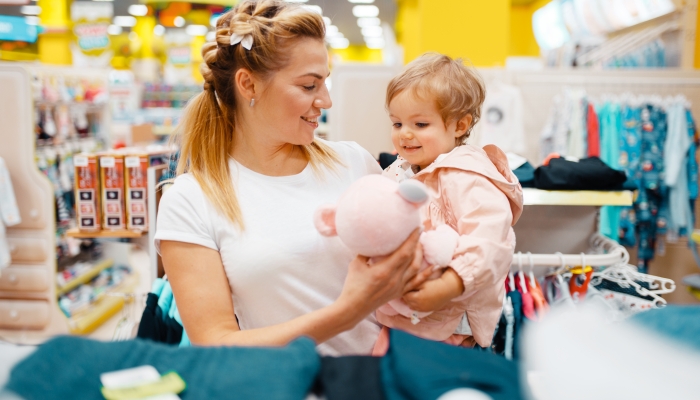
- Finding safe, age-appropriate toys helps prevent accidents and injury.
- It’s important to read the age recommendations on toys to ensure they’re appropriate for your child.
- It’s a great idea to teach kids about unsafe toys and how to prevent injury.
Unfortunately, toy-related injuries send thousands of children to the emergency room each year. As a mom, it’s scary to think that a toy I got my child could send them to the hospital. Don’t mind me as I purge everything I’ve ever bought.
Certainly, the local big box store doesn’t have a “dangerous toys” aisle. Those wouldn’t end up on the top ten list. So how do you know what’s safe for your child and what you should leave on the shelf?
It seems overwhelming, but there is a way to make your home a safe place for your children, and it doesn’t involve throwing out every toy you’ve ever purchased.
Safe toy selection starts by reading the age recommendation label on toys and adhering to it. While your child may kick and scream if they don’t get what they want, there’s a reason why toys have these labels on them.
How to Choose Age-Appropriate Toys
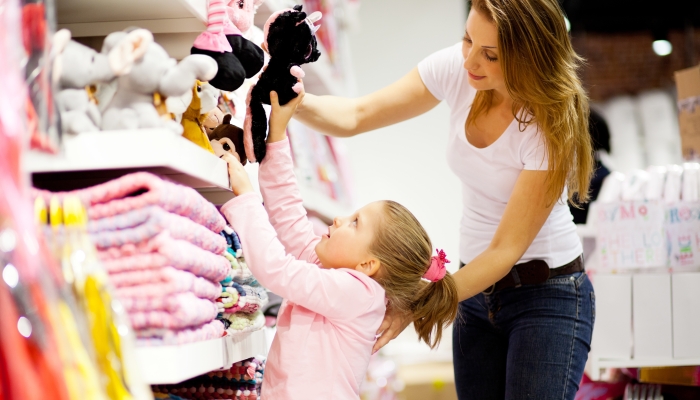
First, consider their age when choosing safe toys for your kids, especially since most toys come with age recommendations. When you buy toys, avoid toys meant for older children and likely unsafe for little ones.
The Consumer Product Safety Commission (CPSC) reported nine toy-related deaths in 2020 in children under 1411. Qin, A.. Toy-Related Deaths and Injuries Calendar Year 2020. U.S. Consumer Product Safety Commission. 2021;. https://www.cpsc.gov/s3fs-public/Toy-Related-Deaths-and-Injuries-2020.pdf, mainly related to choking and suffocation. It’s scary to think about but important to know—those age labels really do matter.
Why Age Labels Matter for Safe Toys
It’s easy to overlook an age recommendation label if you think your child is ready. However, warning labels are there for a reason, and it’s important to understand the developmental appropriateness of your buying.
As a first-time mom, I didn’t know what I was doing. (After three kids, I still don’t know what I was doing, but let’s get back on topic.) However, I emphasized providing my children with safe toys in a secure play environment.
I learned that each stage of life had a different selection of toys at the store, and I shouldn’t leave my lane until my children were ready.
Infant (0–12 months):
You’ll want to avoid toys with small parts that could pose a choking hazard. Instead, focus on toys that promote sensory stimulation and your child’s development.
Crawling toys for babies are a great way to keep your baby engaged in a safe, secure environment.
In addition, you want to avoid adding soft objects, loose bedding, or a hanging crib toy in your infant’s room. While it seems like a good idea, buying crib toys and excessive blankets can be dangerous for little ones.
Toddler (1–3 years):
Toddler toys usually have larger pieces and are durable enough to withstand falls. You should avoid hobby kits, like science sets, that sometimes have dangerous chemicals.
Art materials are great for toddlers, but ensure you monitor your children when using them.
Preschool (3–5 years):
While preschoolers are less likely to put toys in their mouths, avoiding toys with small pieces is still important. However, you can typically trust preschoolers with stuffed toys with eyes or other hard pieces.
School-age (6+ years):
Children younger than the recommended age shouldn’t play with toys with advanced functionalities and electronic components. Outdoor toys are usually an excellent option for an older child and help them work on their gross motor skills.
Outdoor climbing toys are a great option for kids who need to get their energy out at home!
Identifying and Avoiding Toxic Materials in Toys
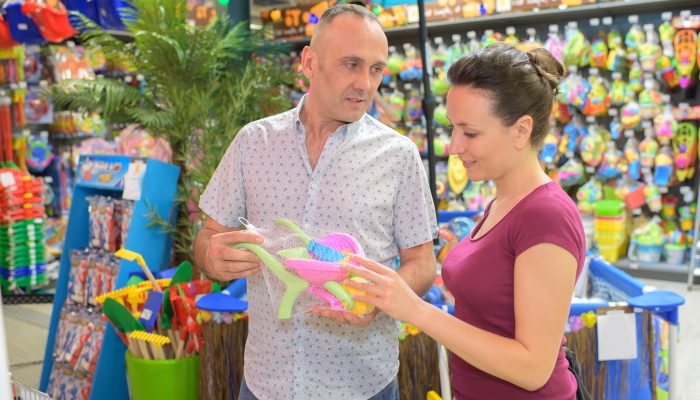
No parent would agree to give their child a toy containing lead, but sometimes you don’t know how it was made. We look at the labels on our food, but why not toys?
Common Hazardous Materials in Plastic Toys
Many plastic toys contain BPA, phthalates, DEHP, and other chemicals that could harm your child’s health.
If you buy plastic toys, it’s best to opt for ones that are PVC-free, or avoid plastic altogether and pick toys made with silicone, bamboo, or wood.
Tips for Choosing Non-Toxic Toys
When buying toys, check for the letters “ASTM,” meaning it meets the national safety standards by the American Society for Testing and Materials.
ASTM22. ASTM International – Standards Worldwide. ASTM.org. https://www.astm.org promotes focus on public health and safety and publishes technical standards for various products, services, and systems.
Tips for choosing non-toxic toys:
- Avoid toys with a strong chemical smell.
- Opt for natural materials like wooden toys or organic fabrics.
- Check hand-me-downs for mold or mildew.
- Avoid painted wooden toys unless you know where they were made.
- Avoid toys made from vinyl (PVC).
Cleaning Toys
Another part of toy safety is keeping your toys clean to prevent dirt and germs from spreading throughout your house.
Here are a few tips for cleaning toys:
- To clean toys, mix mild dishwashing detergent with hot water in a spray bottle.
- Rinse the toys afterward and let them air dry before children play with them again.
- Use a washcloth to clean the select toys that can’t get wet.
Learning how to clean baby toys is helpful because it ensures your child only puts safe toys in their mouth.
Ensuring Safety When Choosing Toys
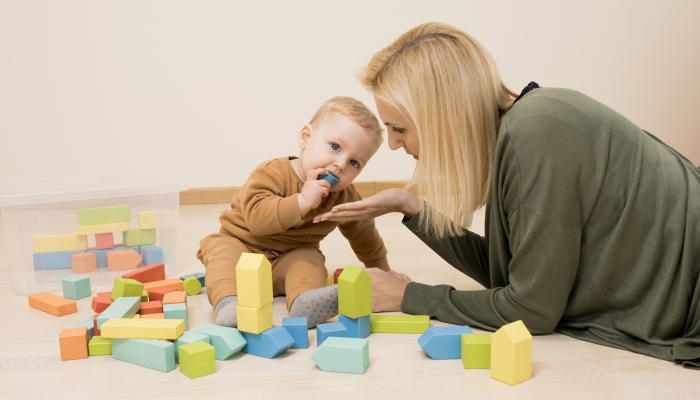
Ensuring toy safety is vital regardless of your child’s age, and there are several things to consider when bringing toys into your home.
Be Mindful of Choking Hazards
Parents know anything and everything goes into a young child’s mouth, so it’s important to be mindful of your chosen toys.
Possible choking hazards include:
- Toys with detachable parts
- Stuffed animals with hard or button eyes
- Latex balloons
- Marbles
- Coins
- Water beads
If you’re unsure if a toy is a choking hazard, try the “toilet paper test.” If a toy can fit through the toilet paper tube, your child can swallow it.
Watch for Strings and Cords
Toys with cords, long strings, or loose ribbons may pose a strangulation risk for young children.
According to Seattle Children’s Hospital33. Safety and Injury Prevention Toy Safety. Seattle Children’s Hospital. https://www.seattlechildrens.org/health-safety/keeping-kids-healthy/prevention/toy-safety/#:~:text=Toys%20with%20cords%20or%20strings,on%20their%20hands%20and%20knees., toys with strings or cords longer than 7 inches pose a hazard to babies and young children.
The hospital advises against hanging cords, ribbons, or strings in your baby’s crib and removing crib gyms when your child can pull up on their hands and knees.
Avoid Toys That Shoot
The Academy of Pediatrics recommends avoiding toys that shoot44. Top 10 Tips for Buying Safe Toys This Season. American Academy of Pediatrics. 2021. https://www.aap.org/en/news-room/news-releases/health–safety-tips/american-academy-of-pediatrics-top-10-tips-for-buying-safe-toys-this-season/#:~:text=Avoid%20toys%20that%20shoot%20objects,can%20cause%20choking%20if%20swallowed. because they can cause eye injuries or choking if swallowed. Toys that shoot objects aren’t safe despite your child’s age, but they certainly aren’t ideal for young children who don’t have the best aim.
Watch for Wear and Tear
It’s always best to regularly inspect toys for wear and tear and eliminate broken or damaged ones. Some children’s toys expose sharp edges when damaged, so removing them as soon as possible is important.
Mind the Noise Levels
While noisy toys are fun for kids, excessively loud sounds could harm your child’s hearing. When purchasing noisy toys, look for ones with adjustable volume settings.
Digital and Electronic Toy Safety
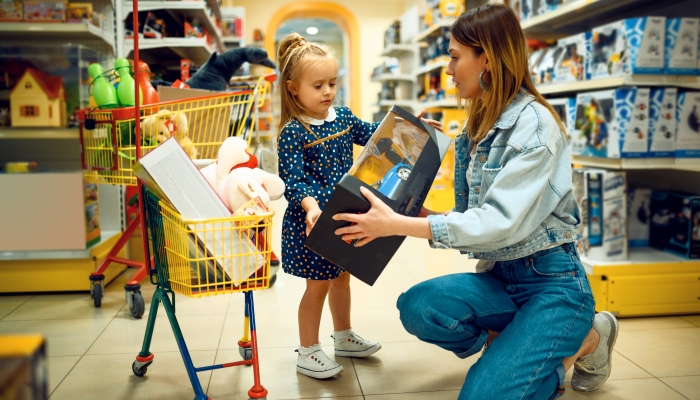
I consider my parents (and myself!) lucky that social media wasn’t around when I was a kid. However, here we are, and keeping our kids safe in the digital age is important. Here are some things to keep in mind with digital and electronic toys.
Battery-Operated Toys
You should be mindful of electric toys that require batteries and keep them out of your baby’s reach. Unfortunately, batteries pose a significant risk if ingested and should be out of the reach of small children.
In addition, you want to ensure the battery compartments are secure and tightened after changing the batteries, avoiding exposed removable parts.
Online and App-Connected Toys
It’s no secret kids have fun playing on phones and tablets, but not everything is safe for younger children.
The American Academy of Pediatrics states that a child younger than two needs social interaction55. Hill, D., Ameenuddin, N., Reid Chassiakos, Y. (Linda), Cross, C., Hutchinson, J., Levine, A., Boyd, R., Mendelson, R., Moreno, M., & Swanson, W. S.. Media and Young Minds. Pediatrics. 2016;138(5). https://doi.org/10.1542/peds.2016-2591 to develop their cognitive, language, motor, and social-emotional skills and don’t learn from traditional digital media as well as they do from caregivers.
For older children who can use app-connected toys, you want to monitor them to ensure privacy and age-appropriate content.
The Role of Toy Reviews and Recalls
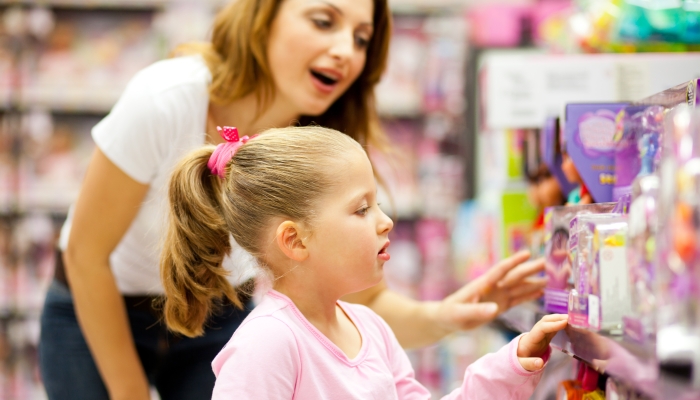
It takes a village to raise a child, right? It also takes a village to write a real-life review of a children’s toy.
Leveraging Parent Reviews
Real-world feedback is the key to determining whether a product is worth buying. When buying toys, looking for photos is always a good idea to ensure the person reviewing the product actually used it.
I’m always skeptical about reviews where the person was paid to leave feedback and try to pick toys that have reviews from everyday consumers.
Stay Up-to-Date on Recalled Toys
Checking for recalls before purchasing a toy is always a good idea. Toys are recalled for various reasons, mainly due to safety concerns.
You can search for recalls by searching the Consumer Product Safety Commission66. Recalls. U.S. Consumer Product Safety Commission. https://www.cpsc.gov/Recalls website. You should contact the manufacturer for future instructions if you purchased a recalled toy.
With most recalled toys, you will either receive a replacement part or a refund for your purchase.
References
- Qin, A. (2021, July). Toy-Related Deaths and Injuries Calendar Year 2020. U.S. Consumer Product Safety Commission. https://www.cpsc.gov/s3fs-public/Toy-Related-Deaths-and-Injuries-2020.pdf
- ASTM International – Standards Worldwide. ASTM.org. (n.d.). https://www.astm.org
- Safety and Injury Prevention Toy Safety. Seattle Children’s Hospital. (n.d.). https://www.seattlechildrens.org/health-safety/keeping-kids-healthy/prevention/toy-safety/#:~:text=Toys%20with%20cords%20or%20strings,on%20their%20hands%20and%20knees.
- Top 10 Tips for Buying Safe Toys This Season. American Academy of Pediatrics. (2021, December 8). https://www.aap.org/en/news-room/news-releases/health–safety-tips/american-academy-of-pediatrics-top-10-tips-for-buying-safe-toys-this-season/#:~:text=Avoid%20toys%20that%20shoot%20objects,can%20cause%20choking%20if%20swallowed.
- Hill, D., Ameenuddin, N., Reid Chassiakos, Y. (Linda), Cross, C., Hutchinson, J., Levine, A., Boyd, R., Mendelson, R., Moreno, M., & Swanson, W. S. (2016). Media and Young Minds. Pediatrics, 138(5). https://doi.org/10.1542/peds.2016-2591
- Recalls. U.S. Consumer Product Safety Commission. (n.d.). https://www.cpsc.gov/Recalls
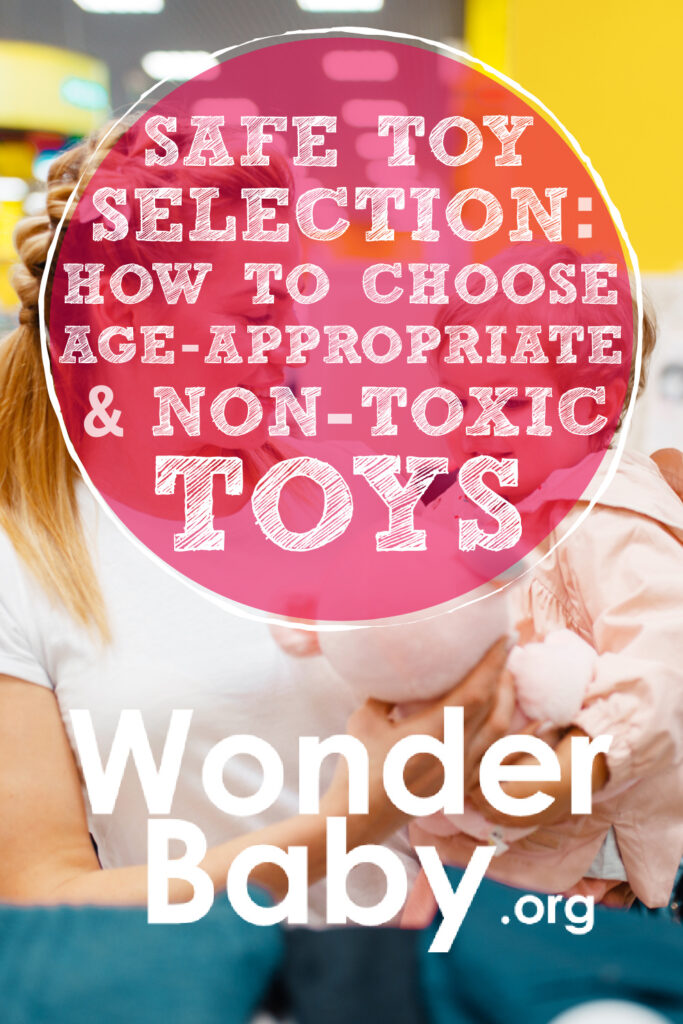
Related Posts

Braille and Literacy, Toys, Visual Impairment
24 Braille Toys for Kids Who are Blind
Everything from alphabet blocks to raised line coloring pages and activity books to puzzles to card and board games... and so much more! And it's all in braille ready for...
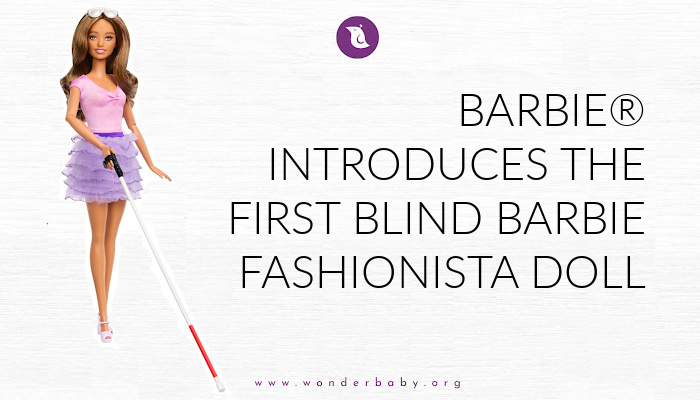
Toys, Visual Impairment
Barbie® Introduces the First Blind Barbie Fashionista Doll
Mattel, in partnership with AFB, announced the addition of a blind Barbie doll with white cane and sunglasses.
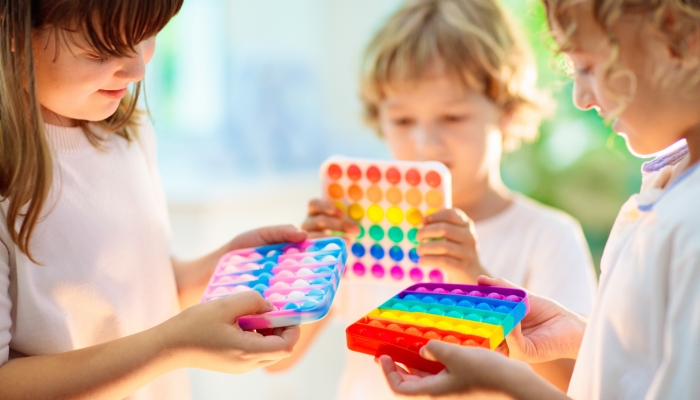
Autism, Sensory Activities, Toys
5 Best Sensory Seeker Toys
Check out our guide to the best sensory seeker toys for kids who like to rock, spin, chew, and fidget. It’s not just about fidget spinners!